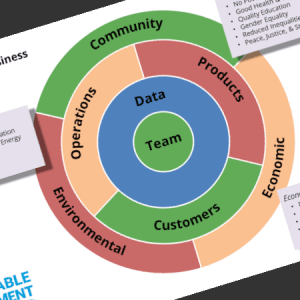Notes from a coffee-talk coaching discussion; leadership approaches for encouraging strategic thinking in your team.
I was enjoying the coffee and the great conversation; a colleague and I were talking about the changes in her role over the past few months. An excellent technical background, paired with intelligent and effective project and program management skills, had earned her the opportunity to move up in the organization, taking on a bigger role – leading her fast-growing team.
We covered some of the classic topics – she missed, for example, the chance to Do The Job. Her project work was reduced as she went to management meetings, wrote performance plans, and did business development. She was having plenty of success, no real issues. “It’s just … different than the old days …” she said.
I didn’t have much for her – she had figured out many of these new and different experiences independently, and was doing quite well with her team. But then, she asked me a really good question and threw me for a loop.
“How do you get your team to think strategically?”
She had heard any number of different interpretations of what the right approach could or should be. The team was comfortable focusing on short-term tactics versus moving towards a broader goal. Some people confused strategy with planning. Some were challenged by the lack of a clear and consistent strategy in different areas of the company.
I wasn’t surprised to hear her observations, but I haven’t ever thought of the root question asked in such a simple way. As I pondered a moment, I was getting quieter and quieter, trying to figure it out for myself. In the past, I would just let folks find their own level and focus on the piece of the puzzle that they knew. But this conversation made me think I had not invested the right time with my teams.
Ah … a chance to make up for lost time. How would I answer that question today?
Do You Know What Strategy Is?
Let’s start with the basics. What does “strategy” really mean? In my previous post, I called out a classic Harvard Business Review article by Collis & Rukstad (Can You Say What Your Strategy Is?), which lays out a simple framework for articulating the path to winning.
- Objective: What outcomes are you trying to reach? What does “done” look like?
- Scope: Don’t fall into the trap of trying to “boil the ocean” – be specific.
- Advantage: What critical skill, what important new method, will deliver the results?
This is strategy at its most basic – what you do, where you play, and how you win. It’s essential to distinguish strategy from tactics – strategy is the game plan, while tactics are the plays you run in the game.
Do You Know What Your Strategy Is?
With that simple definition established, we continued our conversation as we headed back to our desks.
Step one – have we captured a clear and concise strategy statement for her team? And let’s make sure it cleanly aligns with the strategy and objectives of the overall organization.
- What You Do: Clarify processes, tools, technology, and focus. How does each team member’s job contribute to the bigger picture?
- Where You Play: Define your customer base (internal and external), your team’s role in delivering value to those customers, and how you fit into the broader corporate strategy.
- How You Win: Focus on skills, processes, collaboration, and communication. What makes this team different?
There are a few interesting nuances at this point. It’s just as important to know what you don’t do, for example – we can’t be all things to all people, we must be focused on the things that create the most value. Or “how you win” – where investing in training, tools, and methods can be prioritized.
Methodologies to Guide Strategic Thinking
There are plenty of management models that are effective in developing strategic thinking in team members. Why not encourage the team to learn more about these ideas?
Lean Management: This model focuses on creating more value for customers with fewer resources. It emphasizes continuous improvement, efficiency, and eliminating waste in processes. Lean Management encourages team members to think strategically about optimizing workflows and delivering maximum value.
80/20: The Pareto Principle suggests that 80% of results come from 20% of efforts. Many manufacturing firms use this idea as the basis of a methodology that prioritizes our investment of resources for the most valuable products, and our investment of attention to the most valuable customers. In strategic thinking, it can be used to identify and focus on the most productive activities, resources, or products that yield the most significant results.
SWOT Analysis: SWOT stands for Strengths, Weaknesses, Opportunities, and Threats. This framework helps teams analyze internal and external factors that affect their organization. It’s a strategic planning tool that assists in identifying key areas for development and potential challenges to be addressed.
Balanced Scorecard: This model involves viewing the organization from four perspectives: Financial, Customer, Internal Business Processes, and Learning and Growth. It helps set and measure objectives based on these perspectives, encouraging strategic thinking aligned with the organization’s vision and goals.
Blue Ocean Strategy: This strategy emphasizes creating new market spaces (‘blue oceans’) rather than competing in existing ones (‘red oceans’). It encourages innovation and looking beyond current industry conditions to find new ways of adding value and achieving growth.
These models encourage different ways of thinking and can be instrumental in developing a strategic mindset among team members.
Developing Skills for Tough Conversations
Transformation isn’t without resistance; some team members may struggle with strategic thinking. We talked about approaching these challenges head-on, deciding whether to help them adapt or make tough decisions about their roles. Ok, that sounds a little heavy-handed – my coffee companion was not worried about resistance. She just wanted to find a pivot point, looking for a good method to help her team adopt a strategic mindset. She is fostering a culture where strategic thinking is valued and practiced.
Back to Work
As our phones started buzzing, reminding us of our next call(s), things began to crystallize into a clear, albeit humorous, truth. Strategy isn’t just a fancy boardroom word – it’s the secret sauce for playing a bigger, smarter game. The journey from tactical toil to strategic thinking is akin to moving from checkers to chess. It’s about seeing the whole board, understanding the power of each piece, and orchestrating moves that turn today’s actions into tomorrow’s victories. And like any game, the joy is in the play, not just the win.
How do you encourage strategic thinking for your team? Share your ideas in the Comments section below …
9 January, 2024
- Leading Change: Pick Something, and Do It Well
- Leading Change: Knowing, Understanding, Empathizing
- Leading Innovation: Inspiration, Art, Science, and Execution
- Empathy Skills for the Transformational Leader
- Fostering Strategic Thinking in a Tactical World: A New Manager’s Guide






Comments (0)